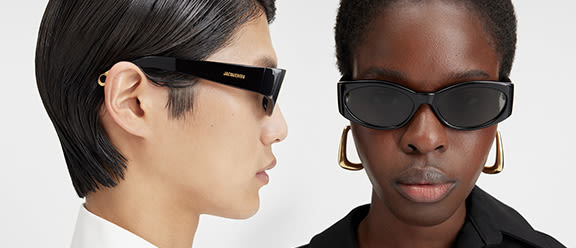Varifocals Guide: Our Top Tips & Help When Selecting New Varifocal Lenses
Our guide will help you when selecting and purchasing your new set of varifocal lenses while also dispelling some of the myths around progressive glasses. Find out how varifocals work, what you need to get used to them, and why you no longer have to spend a fortune on a pair of varifocal glasses anymore.
1. What are varifocal glasses?
Varifocal glasses correct several vision issues all at once. That is why they are known as multifocal or progressive glasses. Varying visual strengths from near to far ranges are corrected seamlessly through a special type of lens. Defective vision and presbyopia are simultaneously corrected.
2. Why and when do you need a pair of varifocal lenses?
Farsightedness, also known as presbyopia, occurs at around 40 years old and affects most people at some point in the course of their life. It is not faulty vision in the traditional sense of the word, but rather an age-related loss of functionality. The lens of the eye loses elasticity and leads to increasing difficulties when adjusting to different distances. Reading, in particular, becomes more difficult and a set of reading glasses is then needed. Not everyone wants to constantly put on and take off glasses, especially when you already have existing correctional issues and need to switch between two different pairs of glasses. In this case, you will find varifocal lenses to be the best option.
Discover our varifocal glasses3. How do varifocals work?
Varifocal lenses are divided into different visual zones. The top of the lens is used to look into the distance. The central area covers objects that are in the intermediate distance, such as car fittings. It also serves to facilitate a smooth transition between long to short ranges, which is located in the lower part of the lens and used for reading.
Depending on which part of the progressive lens you are looking through, you will see sharply and clearly at the respective distance.


4. What do you need to know about varifocal lenses?
The technical nature of these types of lenses means that the edge area is blurry and, depending on the visual range, can vary in size.
At Mister Spex you can order varifocal lenses with standard, extended or maximum visual ranges:


Normal field of view


Wider field of view


Maximum field of view
How long will it take to get used to varifocal lenses?
This is the hard question to answer. The time required to acclimatise to varifocals is dependent on the individual. Varifocal lenses are complex, which means not everyone can get used to these kinds of glasses immediately. Some people get used to varifocal glasses and can see clearly after only a few hours, while in some exceptional cases it takes several weeks. The higher the quality of the selected lenses, the larger the viewing range, which in turn results in a more comfortable adaptation time with your new varifocal spectacles.
Tip: Due to the different fields of view of varifocal lenses, it is advisable to select a pair of frames that are big enough. Otherwise, the different visual fields will be too small. At Mister Spex, you will find over 4000 frames to suit your fancy.
Discover our varifocal glassesHow do I order varifocal glasses online?
Try-on virtually: Try our varifocal glasses on in 3D using your webcam and choose up to four of your favourite frames. You can also select up to four of your favourite frames and we’ll send them to you for home-trial, free of charge. This way you can choose your favourite pair from the comfort of your own home.
1. Try-on online
Try our varifocal glasses on in 3D using your webcam and choose up to four favourite looks.
2. Free home-trial
We’ll send you up to four of your favourite frames for home-trial, free of charge. This way you can choose your favourite pair from the comfort of your own home. Once you have selected the frames you want, take a front-facing photo of yourself with them on and send it to us. Our opticians will calculate your pupillary distance for you.
3. Order online
Order your desired glasses with your specified corrective values.
4. Your new varifocal glasses
After a few days your new glasses will arrive to your home or office.




